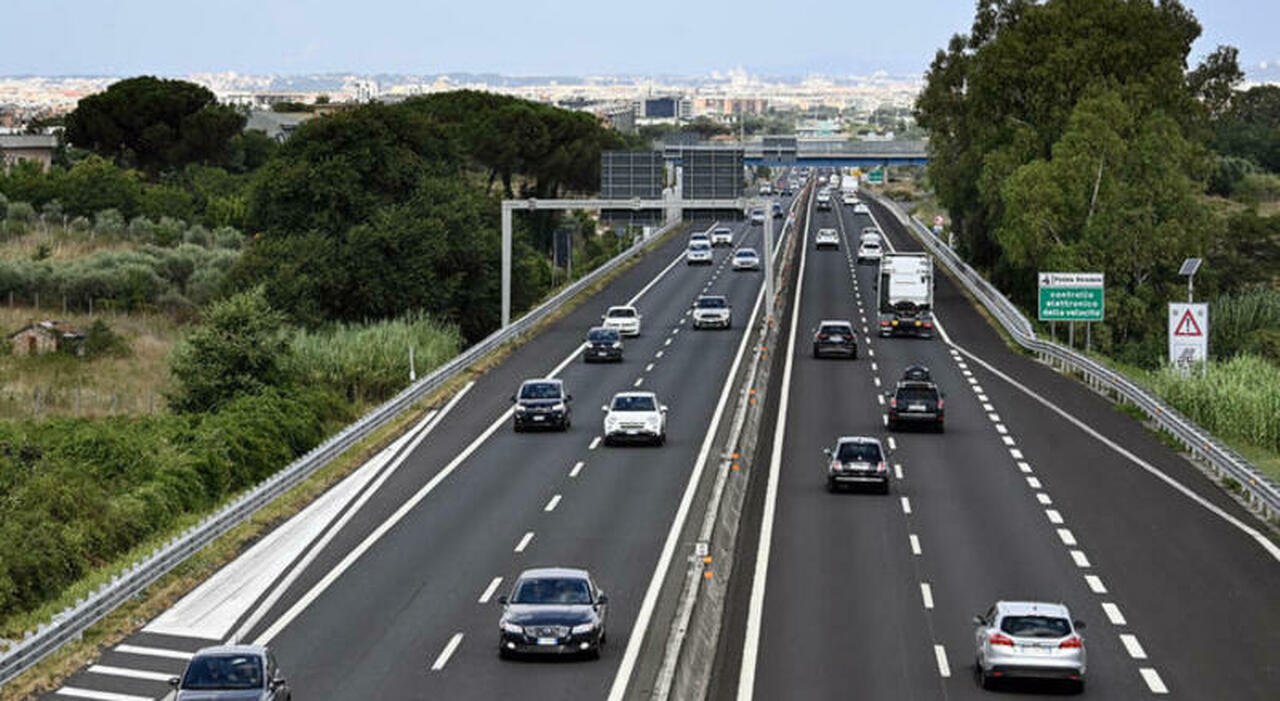Tips & Advices
Norway Joins France, Denmark, Estonia, Greece, and Croatia as UK Announces Travel Advisory for New Schengen Border Entry Requirements

Published on
August 7, 2025 |
By: TTW News Desk
Norway joins France, Denmark, Estonia, Greece, and Croatia as the UK issues new travel restrictions due to change in border entry requirements which will come into effect on the 12th of October, 2025. This is in parallel with the additional biometric security features set to be implemented by the EU on its new border control system, the Entry/Exit System (EES). The UK is warning its travelers to be prepared for additional security finger, face, and eye recognition checks on entering these countries, which will need to implement tighter border security and reduce the risk of illegal immigration for the Schengen countries.]
As the European Union prepares to roll out its new Entry/Exit System (EES) on October 12, 2025, the UK FCDO has issued a new travel advisory for British citizens traveling to the Schengen area. This update comes as several Schengen nations, including Norway, France, Denmark, Estonia, Greece, and Croatia, implement new entry protocols that will affect travelers arriving from the UK. The EES will introduce new biometric checks and further border regulations, impacting travelers’ experience at the border.
Norway: Updated Travel Rules and Entry Requirements
Norway is one of the Schengen countries where UK citizens will face new entry requirements starting October 12, 2025. As a part of the Schengen area, Norway will introduce the European Union’s new Entry/Exit System (EES). This means travelers will need to undergo biometric screening, including fingerprint and facial recognition, when entering or leaving the country. These checks will be part of the broader European effort to enhance border security and streamline immigration processes.
For British travelers, the following requirements will apply:
- Passport Validity: UK travelers must ensure their passports meet Schengen rules. Your passport must have been issued less than 10 years before your arrival in Norway and must remain valid for at least 3 months after your intended departure from the Schengen area.
- Visa Requirements: UK travelers can visit Norway for up to 90 days within any 180-day period without a visa for tourism, business, or short-term studies. However, the new EES could slightly increase wait times at border crossings.
- Travel Insurance: While travel insurance is not compulsory, it is strongly recommended. Insurance should cover emergencies, such as health issues, cancellations, and trip interruptions.
- Onward Tickets and Financial Proof: Travelers may be asked to show a return or onward ticket and prove sufficient funds to cover their stay.
France: Stricter Schengen Entry and Biometric Checks
France has long been a popular destination for UK travelers, but starting on October 12, 2025, visitors will face tighter entry controls. Like other Schengen nations, France will implement the new EES system, which involves biometric data collection (fingerprints and facial photos) at border entry and exit points.
For UK passport holders traveling to France, these changes mean:
- Passport Validity: UK passports must meet the Schengen validity requirements. If your passport was issued more than 10 years ago (before October 1, 2018), ensure that it meets the criteria set by the Schengen area for entry.
- Visa-free Travel: Travelers can still enter France for up to 90 days within a 180-day period for tourism or business without a visa. However, overstays could result in a three-year ban from entering any Schengen country.
- Proof of Funds and Accommodation: Travelers may be asked to provide evidence of sufficient funds for the duration of their stay and proof of accommodation, such as hotel bookings.
- Travel Insurance: It is advisable to obtain comprehensive travel insurance, particularly to cover any medical emergencies or trip cancellations.
Denmark: Enhanced Border Security with EES and New Travel Guidelines
Denmark, another prominent Schengen country, will also implement the EU’s Entry/Exit System starting on October 12, 2025. For British travelers, this means additional biometric checks, including fingerprint and facial recognition scans, when entering or leaving the country.
Key travel considerations for Denmark include:
- Passport Validity: Ensure that your UK passport is not older than 10 years from the date of arrival in Denmark, and that it has at least 3 months of validity remaining after your intended departure from the Schengen area.
- Visa Requirements: As a tourist, UK travelers do not need a visa for stays of up to 90 days within a 180-day period. This applies for business, tourism, and short-term study trips.
- Travel Insurance: While travel insurance is not mandatory, it is highly recommended for your protection during your travels. Ensure your insurance covers health emergencies and trip cancellations.
- Proof of Funds: Be prepared to show financial evidence of your ability to cover your expenses during your stay, especially if traveling to multiple countries in the Schengen area.
Estonia: New Schengen Rules for Short Stays and Longer Visits
Estonia, one of the Baltic nations in the Schengen zone, will also be rolling out the new EES system from October 12, 2025. British citizens traveling to Estonia should be aware of the following updates:
- Passport Validity: As with other Schengen countries, UK passport holders must ensure their passport was issued within the last 10 years and remains valid for at least 3 months after departure from Estonia.
- Visa-Free Travel: UK nationals can continue to travel to Estonia for up to 90 days within any 180-day period for business, tourism, or short-term studies without the need for a visa.
- Additional Border Controls: With the introduction of the EES, travelers will be required to undergo biometric screening at border entry and exit points. This is a new measure aimed at improving security across the Schengen area.
- Travel Insurance: Ensure that you have travel insurance that covers medical emergencies, cancellations, and other unexpected issues during your stay in Estonia.
- Proof of Funds: Be ready to show proof that you can financially support yourself for the duration of your trip, especially if your stay includes multiple Schengen countries.
Greece: Updated Border Controls and EES Implementation
Greece, a key destination for British tourists, will implement the new EES system on October 12, 2025, affecting travelers’ entry and exit procedures. Here’s what UK travelers need to know:
- Passport Validity: Ensure that your UK passport is no older than 10 years from your arrival date in Greece and valid for at least 3 months after your planned departure from the Schengen area.
- Visa-Free Travel: UK passport holders can visit Greece for up to 90 days within any 180-day period for tourism, business, or short-term studies without requiring a visa.
- EES Impact: As part of the EES system, UK travelers will need to provide biometric data (fingerprints and photos) upon arrival and departure. While this is intended to enhance border security, it may result in longer waiting times at entry points.
- Travel Insurance: While not mandatory, travel insurance that covers medical expenses, cancellations, and other emergencies is highly recommended.
- Financial Requirements: Border officials may ask for proof that you have enough funds to cover your stay in Greece. Be prepared to present evidence of sufficient funds, especially for extended stays or travel to multiple Schengen countries.
Croatia: Transition to Schengen Rules and Enhanced Entry Procedures
Croatia, which recently joined the Schengen area, will implement the new EES system as part of the EU’s updated border security measures. British travelers should prepare for the following changes:
- Passport Validity: UK passport holders must ensure their passports are valid for at least 3 months after their departure from Croatia and that they were issued within the last 10 years.
- Visa Requirements: UK nationals can travel to Croatia for up to 90 days in a 180-day period without a visa for tourism or business purposes.
- Biometric Screening: Starting in October 2025, travelers will need to undergo biometric screening at the border. This process involves fingerprint and facial recognition, and may increase processing times.
- Travel Insurance: Although travel insurance is not mandatory, it is recommended for covering unforeseen circumstances such as medical emergencies or travel delays.
- Proof of Financial Support: Border guards may ask for evidence of sufficient funds to cover your stay in Croatia. Be ready to present evidence of accommodation and financial support.
Norway, along with France, Denmark, Estonia, Greece, and Croatia, is now part of the UK’s updated travel advisory due to the new Schengen entry regulations coming into effect on October 12, 2025. These changes, including biometric checks and stricter border controls, are being implemented to enhance security and streamline immigration processes across the Schengen area.
Starting October 12, 2025, when the Schengen zone implements new biometric entry and exit systems, British travelers to Norway, France, Denmark, Estonia, Greece, and Croatia will face increased scrutiny at border control. These alterations represent the European Union’s attempts to improve security procedures and streamline the flow of immigration. Following the new entry protocols, having valid passports, needed documents, and appropriate travel insurance will ease your travel throughout the Schengen area. Always review the most recent travel warnings and comply with the policies of every individual country to ensure timely travel or issues throughout the journey.
Tips & Advices
Essential Road Safety Tips for Summer Travel

Once again this year, the Highway Patrol, in anticipation of the massive summer exodus, wants to disseminate the useful vademecum to tackle and reach holiday destinations safely, advice that remains valid for any movement. Before setting off, it is good practice, first of all, to check the vehicle’s efficiency, with particular attention to the tire pressure and tread conditions which must not be less than 1.6 millimeters. Equally important, if the vehicle is equipped, is to also check the conditions of the spare wheel or otherwise the inflation kit. Check the engine fluid levels, brake pad wear, and therefore the correct functioning of all the vehicle’s lighting devices such as headlights, rear lights, brake lights, and turn signals. Equally important is the condition of the front and rear windshield wipers, whose proper functioning is essential for optimal visibility even in case of rain. The arrangement of the luggage must also be taken care of in such a way that the distribution of the loads does not unbalance the stability of the vehicle and, if using roof racks, always ensure they are well anchored. In case of transport, pets must be secured in the appropriate carriers. Before departure, avoid consuming large meals or drinking alcoholic beverages and possibly check the traffic and weather conditions along the route to be traveled. It is also reminded that it is mandatory for passengers in the front and rear seats to always wear seat belts and secure children in appropriate approved seats. For those traveling on two wheels, it is important to fasten the protective helmet properly and use protective measures. During the journey, proceed at a moderate speed, respecting the limits set by the road owner, exercising maximum caution if you decide to overtake using the appropriate lane. Traffic on the highway, the red and black flag days for August 2025. Avoid any distraction during the journey, especially using the smartphone, even for a very short moment because hundreds of meters are covered without the necessary attention. On the highway, it is reminded that it is allowed to occupy the emergency lanes only in cases of actual necessity, and if so, position the emergency triangle at least 100 meters from the broken-down vehicle, always wearing the reflective vest. Where possible, however, it is better to stop in the appropriate service areas. In any case, without further delay, contact the single emergency number (112) indicating the exact position and wait for the arrival of assistance. At the same number, all possible issues such as accidents, vehicles in trouble, objects on the road, or fires must be reported; in this regard, it is absolutely forbidden to throw cigarettes or matches out of the windows. In case of fatigue, it is advisable to reach a safe place for a stop, so as to resume normal attention conditions for safe and responsible driving. On the State Police website, in the area reserved for Italy’s Viability (https://www.poliziadistato.it/articolo/1815cb58d622d6ac985858152) the ‘Summer Exodus Plan 2025’ has been published where it is possible to find: – the intense traffic calendar (flags); – the mapping of the road and motorway sections most subject to traffic issues and related alternative itineraries (north – center – south and islands); – the geographical areas ordinarily subject to overflight by State Police and Carabinieri aircraft; – the railway police surveillance plan; – the mapping of speed detection systems (tutors) located on the motorway network.
© ALL RIGHTS RESERVED
This article is automatically translated
Tips & Advices
Mississippi school travel safety tips

JACKSON, Miss. (WJTV) – Mississippi parents and students are encouraged to stay safe while going to school and back home.
AMR in central Mississippi advised parents to teach their children the following rules to stay safe when traveling to or from school.
Getting on or off the bus:
-
Riders should stay outside the “danger zone” around the bus. The danger zone is ten feet wide all the way around the bus. For little children, say six “giant steps” At that distance from the bus, the bus driver can see a child.
-
If you drop something near the bus, first signal the driver and tell him or her. Never try to pick it up first because the driver may not be able to see you.
-
Always stay away from the wheels of the bus.
-
Hold on to the handrail on the bus.
-
Never assume other vehicles have stopped for the school bus. Keep watching for other vehicles as you walk in front of the bus.
-
If you must cross the street in front of the bus, walk at least ten feet ahead of the bus until you can turn around and see the driver.
-
Make sure the bus driver can see you.
-
Wait for a signal from the bus driver before beginning to cross.
-
When the bus driver signals for you to cross, walk across the road while also keeping an eye out for sudden traffic changes.
-
If you leave something on the bus, never go back to get it. The bus may already be moving and the driver might not see the child.
Getting to the bus stop:
-
Parents should walk smaller children to their stop.
-
Each child should be dressed in contrasting bright colors.
-
Leave home early enough to avoid running to the bus. Running to the bus can be dangerous.
-
Older children should watch the younger ones closely.
-
Children walking or standing in groups are easier for drivers to see than one child alone.
Waiting for the bus to arrive:
-
Always stand at least ten feet from the curb or edge of the road.
-
Do not run or play while waiting for the bus.
-
Do not take anything out of backpacks while waiting. That way, nothing gets dropped or blows away in the wind.
Getting on the bus:
-
Be sure the bus driver can see you and you can see the bus driver.
-
Enter the bus in a single file with the younger children first.
-
Never walk behind the bus.
While the bus is in motion:
-
Stay seated, facing forward.
-
Keep your hands to yourself.
-
Talk quietly. Don’t talk at all near railroad crossings so the driver can listen closely for sounds of a train.
-
Do not distract the driver.
-
Keep the aisles clear. Keep your belongings on your lap.
-
Do not block emergency exits with sports equipment or musical instruments.
Walking to and from school:
-
Always walk on the sidewalk when one is available.
-
Cross the street only at intersections or street corners. Do not “jaywalk.” If a crosswalk is painted on the street, use it.
-
Before you begin to cross the street, stop and look left, right and left again to spot oncoming cars.
-
If no cars are coming, it is safe for you to cross but continue looking left-right-left as you cross.
-
Do not dart into the street between parked vehicles.
Riding a bicycle to school:
-
Always wear a helmet when riding your bicycle.
-
Make sure that your helmet fits correctly.
-
Ride on the right side of the road in the same direction other vehicles are going.
-
If two or more bikers are together, ride one behind the other, not side by side.
-
Come to a complete stop before crossing each street.
-
Make sure clothes, shoes and the bicycle have reflective materials on them so drivers can see you more easily.
Thanks for signing up!
Watch for us in your inbox.
Subscribe Now
Copyright 2025 Nexstar Media, Inc. All rights reserved. This material may not be published, broadcast, rewritten, or redistributed.
For the latest news, weather, sports, and streaming video, head to WJTV.
Tips & Advices
Weather Updates Across India: Travel Disruptions, Flood Warnings And Safety Tips – Outlook Traveller
-

 Brand Stories3 weeks ago
Brand Stories3 weeks agoBloom Hotels: A Modern Vision of Hospitality Redefining Travel
-

 Brand Stories2 weeks ago
Brand Stories2 weeks agoCheQin.ai sets a new standard for hotel booking with its AI capabilities: empowering travellers to bargain, choose the best, and book with clarity.
-

 Destinations & Things To Do3 weeks ago
Destinations & Things To Do3 weeks agoUntouched Destinations: Stunning Hidden Gems You Must Visit
-

 Destinations & Things To Do2 weeks ago
Destinations & Things To Do2 weeks agoThis Hidden Beach in India Glows at Night-But Only in One Secret Season
-

 AI in Travel3 weeks ago
AI in Travel3 weeks agoAI Travel Revolution: Must-Have Guide to the Best Experience
-

 Brand Stories1 month ago
Brand Stories1 month agoVoice AI Startup ElevenLabs Plans to Add Hubs Around the World
-

 Brand Stories4 weeks ago
Brand Stories4 weeks agoHow Elon Musk’s rogue Grok chatbot became a cautionary AI tale
-

 Brand Stories2 weeks ago
Brand Stories2 weeks agoContactless Hospitality: Why Remote Management Technology Is Key to Seamless Guest Experiences
-

 Asia Travel Pulse1 month ago
Asia Travel Pulse1 month agoLooking For Adventure In Asia? Here Are 7 Epic Destinations You Need To Experience At Least Once – Zee News
-

 AI in Travel1 month ago
AI in Travel1 month ago‘Will AI take my job?’ A trip to a Beijing fortune-telling bar to see what lies ahead | China














You must be logged in to post a comment Login